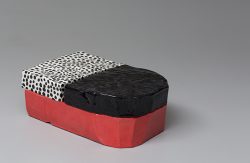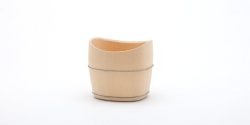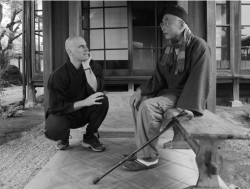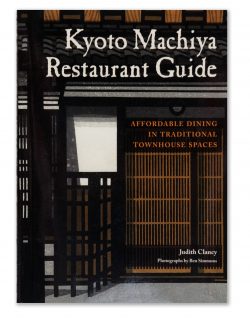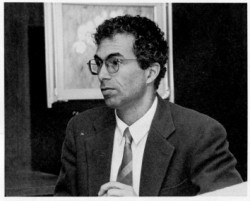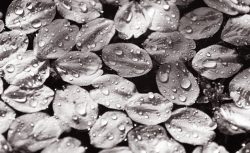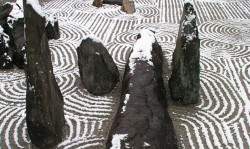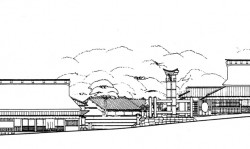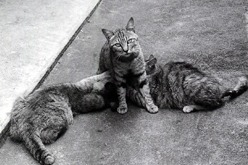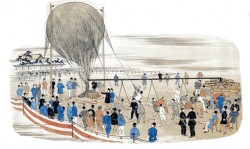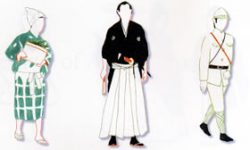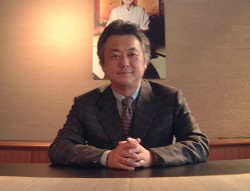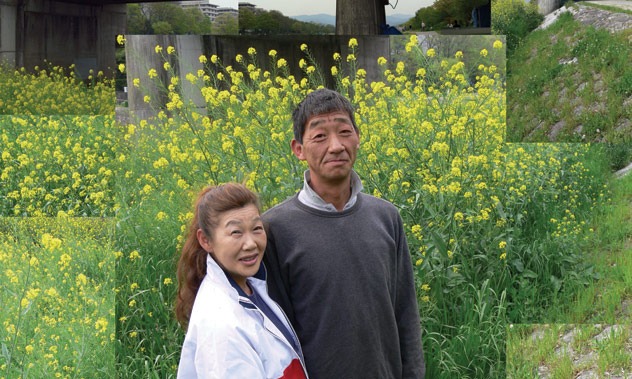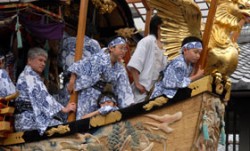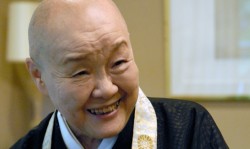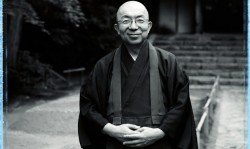Posts Tagged ‘Kyoto’
Kaneko Jun: Collaborations with Space
Taking ceramic art into sculptural-pictorial realms, Kaneko Jun is an artist who straddles cultures and in a sense transforms them with his borderless art.
Read MoreNakagawa Shuji: Oke Maker
When Nakagawa Shuji’s grandfather, Kameiichi, turned ten years old, he went to work at Tarugen. This famed maker of oke (wooden pails or buckets) and barrels, had been established in Kyoto during the waning years of the Edo period (1603-1868), and was to become Kameiichi’s workplace for the next 40 years. In the process, Kameiichi…
Read MoreWe Promise to Fix it Back
Will this catastrophe in Japan change us and lead to a more innovative, caring and interconnected way of living? Will the outbreaks of altruism and civic enthusiasm propel us to take similar steps? Will we demand ingenious forms of accountability?
Read MoreKyoto Machiya Dining
Machiya, the old wooden townhouses of Kyoto, once dominated this city’s urban landscape. Long sturdy structures of simple grace, they closely lined the narrow streets of the city, their tiled rooftops rolling in waves to the surrounding hills and lapping at the edges of the great temples, shrines and villas that rose among them.
Read MoreMapping Kyoto: An Affair of the Heart
Judith Clancy is the author of three books about Kyoto, Exploring Kyoto, Kyoto Machiya Restaurant Guide and Kyoto City of Zen. She has mapped Kyoto in words and images, enabling countless people, residents and visitors alike, to explore the exceptional cultural, historical, religious and gastronomic heritage of this city.
Read MoreRoger Pulvers
When I arrived in Tokyo in 1967 after studying in Poland, I had only $300 left…I came down to Kyoto on the train, rented a little house by Midoro-ga-ike, and started writing short stories….
Read MoreThe Hojoki : Witness in a Torn World
The times are calamitous, and it is scarcely less frightening to look back than forward. A horrific earthquake turns the world upside-down.
Read MoreOf All the Wild Sakura: The Journals of Gary Snyder
My first stay in Japan was from May of ’56 to August ’57. I left to get a change of air, to reflect on my Zen practice, and to earn some dollars.
Read MoreKawamura Junko on Noh
“The actor is not moving, but the pose is full of pent-up energy. Think of a spinning top…”
Read MoreA Sense of Place: Urban Renewal in Kyoto
Of all cities in East Asia, Kyoto has the oldest and probably the strictest official preservation policy…
Read MoreKyoto Rain
Kyoto belongs to the rain. Not a place of brilliant sunlight, it is often sadly gray — an older woman who causes one to remark how beautiful she must once have been.
Read MoreKyoto’s Forgotten Era
A century ago Kyoto was “The city that does everything first.” Today it is “the ancient capital” and “the city of temples and shrines.” Kyoto’s development of leading-edge technology however, continues today…
Read MoreA Festival of Ages
Imagine Kyoto in the year 1868… To symbolise the new dawn it had been decided the emperor should move his capital to Tokyo. When the day of his departure came, thousands of citizens lined the streets, many distraught and in tears.
Read MoreThe Hosomi Museum
Hosomi Yoshiyuki is the founding director of the Hosomi Museum… The museum houses a 1,000 piece art collection representing all major periods of Japanese art from the Jomon to Meiji, featuring 30 Important Art Properties…
Read MoreShakuhachi and Zenga
ART, MUSIC
BY PRESTON HOUSER
The player of the Japanese bamboo flute seeks to display his spirit through musicianship—even if only in a single note, a single exhalation…
Read MoreNishikawa Senrei: Nihon Buyo
“You have to tear down the old completely sometimes to build the new in the spirit of the old. When I revive a piece, everything changes. Even if the performers are all the same, we’ve grown, so through repetition the piece will change.”
Read MoreThe Open Homeless
Over the past eight years, Ryuta and Chieko Kobayashi have resided in shelters made of cardboard and wood, crafted with their own hands, under the Kojinguchi Bridge on the Kamo River…
Read MoreBehind the Brocade Curtain
In the early 1990s I unwittingly moved into a Gion Festival neighborhood…One day I literally stumbled upon the festival’s gigantic floats, some as high as downtown buildings, and marveled at their exquisite adornments of exotic textiles and carvings. I didn’t know what I was looking at, but it blew my mind.
Read MoreOn Genji Monogatari: A Conversation with Setouchi Jakucho
“I started translating The Tale of Genji after turning seventy, though I had well prepared to start for many years by then…”
Read MoreThe Path to Honen-in
For a man who wears so many caps, the shaven-headed priest exudes a genial calm. He talks openly and from the heart; here is none of the closed manner for which Kyoto is famous.
Read More
